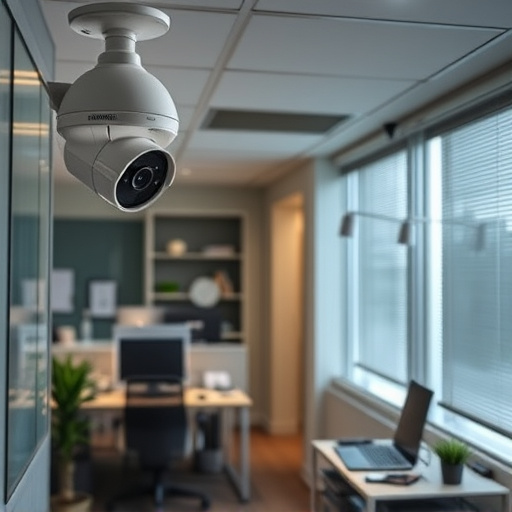Deploying hidden cameras in offices requires a careful balance between security, privacy, and legal requirements. Businesses must strategically place cameras for effective surveillance while respecting employee rights and well-being. Modern technology offers discreet, advanced camera systems, but their implementation needs strategic planning, regular maintenance, and adherence to privacy guidelines to avoid legal issues and foster a positive work environment.
“Unveiling the complex world of office hidden cameras, this article navigates the delicate balance between security and privacy. We explore the legal and ethical considerations that shape their deployment, from understanding employee rights to assessing potential risks. Delving into common placement strategies, we uncover how businesses utilize these systems discreetly. Additionally, we analyze the effect on employee morale and productivity, while highlighting recent technological advancements in hidden camera design. Best practices for implementing and maintaining office security systems are offered, ensuring a comprehensive guide for organizations aiming to enhance their surveillance methods.”
Understanding the Legalities and Ethical Considerations of Office Hidden Cameras
The use of hidden cameras in offices raises complex legal and ethical questions that must be carefully considered. In many jurisdictions, employers need explicit consent from employees to monitor their activities within the workplace, especially if the surveillance involves private spaces like bathrooms or locker rooms. Additionally, there are strict rules regarding what can be recorded and how long footage can be stored. Non-compliance with these regulations can lead to serious legal repercussions for businesses.
From an ethical standpoint, the presence of hidden cameras can significantly impact employee trust and privacy. Workers have a reasonable expectation of privacy at work, and constant surveillance can create a hostile environment, deterring open communication and collaboration. Employers must strike a balance between legitimate business interests and the rights of their staff to ensure fair and respectful practices when considering the implementation of office hidden cameras.
Common Placement Strategies for Office Surveillance Equipment
In implementing office hidden cameras, strategic placement is key for effective surveillance. Common tactics involve positioning them in high-traffic areas like reception desks, break rooms, and common areas to deter theft or inappropriate behavior. Additionally, leveraging existing infrastructure like light fixtures or wall mounts can provide discreet coverage while minimizing visible disruptions.
For focused monitoring, cameras can be strategically placed near valuable assets or sensitive information hubs, such as server rooms or document storage areas. In open-plan offices, ceiling-mounted cameras offer panoramic views, while desk-top or wall-mounted models can capture specific zones. This layered approach ensures comprehensive coverage, balancing privacy considerations with security needs, and leveraging the versatile nature of office hidden cameras.
The Impact on Employee Morale and Productivity
The presence of hidden cameras in an office environment can significantly impact employee morale and productivity. While some employers may argue that surveillance enhances security and prevents misconduct, employees often view it as a violation of their privacy. This perception can lead to feelings of distrust and unease among staff members, impacting their willingness to engage openly in discussions or share ideas freely. A culture of constant observation might discourage collaborative efforts and creative thinking, hindering overall productivity.
Furthermore, the use of office hidden cameras may create an atmosphere of anxiety and stress, affecting employees’ mental well-being. Constant surveillance can make individuals feel as though they are being watched at all times, leading to increased tension and potential burnout. As a result, employee morale suffers, and many may start to search for opportunities in more supportive work environments, causing turnover rates to rise.
Technical Advancements in Discreet Camera Technology
The evolution of technology has brought about remarkable advancements in the field of discreet camera systems, particularly for office hidden cameras. Modern devices are now equipped with enhanced features that allow them to operate virtually undetected while delivering high-quality footage. These innovations include smaller, more compact camera designs that can be easily integrated into everyday office items like pens, potted plants, or even light switches, making them nearly invisible to the human eye.
Moreover, improvements in image resolution and low-light performance enable these hidden cameras to capture clear and detailed videos, ensuring optimal surveillance. Advanced motion sensors and AI-powered analytics further enhance their capabilities, allowing for precise activation and intelligent monitoring. With such technical advancements, office hidden cameras offer a sophisticated level of security, providing peace of mind for businesses while adhering to privacy regulations.
Best Practices for Implementing and Maintaining Office Security Systems
Implementing and maintaining an effective office security system, including the strategic placement of hidden cameras, requires a thoughtful approach to ensure optimal protection without infringing on employee privacy. Best practices dictate a multi-faceted strategy that begins with a thorough assessment of potential vulnerabilities within your workplace. This involves mapping out high-risk areas, understanding traffic flows, and identifying sensitive equipment or documents that require heightened security. Once these factors are understood, security measures can be tailored accordingly.
Regular maintenance is paramount to keep office hidden cameras and other surveillance systems operating at peak efficiency. This includes routine checks for technical glitches, ensuring clear video feed quality, and verifying the integrity of storage media. Additionally, it’s crucial to update software and firmware to incorporate the latest security features and patches. Compliance with legal and ethical guidelines regarding privacy should also be a top priority, fostering transparency among employees while safeguarding against unauthorized access or misuse of surveillance footage.
